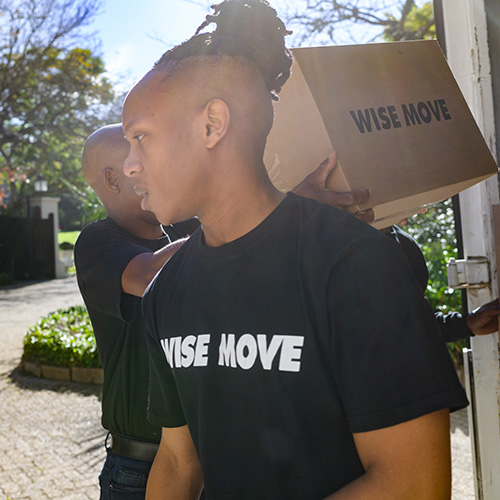
With Canada hoping to welcome 465 000 new permanent residents and Australia forecasting 400 000 new migrants, there’s plenty of opportunity for you to make one of these countries your new home!
But the big question is — Is it better to migrate to Canada or Australia? Well, it depends on what you’re looking for. While Canada and Australia share a lot of similarities in being a part of the Commonwealth, they’re also very different, as they are literally on completely opposite sides of the planet!
So do you prefer maple syrup or vegemite? Bears or kangaroos? Here’s the complete comparison of Canada and Australia, from employment to ease of immigration, so you can decide which one is the perfect home for you!
Canada vs Australia: The Overview
Let’s start with the basics…
Canada has a population of over 38.7 million people with immigrants making up approximately 23% of the population. Located in the northwestern hemisphere, Canada spans 6 different time zones, between UTC -2:30 and UTC -7.
Their currency, the Canadian dollar (CAD) is very strong, where 1 US dollar is equivalent to 1,32 CAN dollars. The Canadian passport is considered the 8th most powerful passport in the world, giving you access to 172 countries out of 195.
Australia has a population of over 26.3 million people with almost 30% born overseas. Found in the southeastern hemisphere, Australia has 5 different time zones between UTC +8 and UTC +10:30.
The Australian dollar (AUD) is almost as strong as the Canadian, at 1,46 AUS dollars to 1 US dollar. Comparatively, the Australian passport is ranked 7th in the world where passport holders can access 185 countries visa-free.
Now that we have a brief overview of Canada and Australia, it’s time to deep dive into the breakdown of which country is better for immigration.
1. Job Opportunities
Canada
It’s easier to find a job in Canada compared to Australia, especially in tech industries where there’s high demand for highly skilled and experienced foreign tech professionals.
The top 5 most popular jobs for new immigrants in 2022 were:
-
Food service supervisor
-
Software engineer
-
Administrative assistants
-
Computer programmers and interactive media developers
-
Information systems analysts and consultants
Australia
While it may be slightly more difficult to find a job in Australia, wages are higher, so you can earn more. Australia offers a Skilled Migration Programme which helps migrants find work and contribute their skills to the Australian economy.
The top 5 high-demand jobs for immigrants include:
-
Registered nurse
-
Secondary school teacher
-
Software and application programmer
-
Electrician
-
Construction manager
1.1 Wages
Canada
In Canada, the minimum wage ranges between CAD 14,15 - CAD 15,50 per hour and is set to increase at the end of 2023.
The average annual income in 2021 was $59 300 per year, or $29,47 per hour, which calculates to $4 942 per month.
Entry-level positions for immigrants tend to start around $58 585 per year while most experienced workers earn up to $99 620. Canada ranks in the top 20 of the world’s highest salaries at number 13.
Australia
Wages tend to be higher in Australia compared to Canada. This starts with the minimum wage at AUD 23,23 per hour or AUD 882,80 per week.
The average Australian annual income is $60 355. Entry-level positions usually start around $57 947 per year while more experienced workers can reach up to $108 467. Australia ranks number 9 on the list of the top 20 highest salaries.
However, it’s important to note that Australia has a higher cost of living compared to Canada.
1.2 Job Security
Canada
Canada has a good employee retention rate with a study in 2022 showing that only 17% of survey respondents felt “somewhat concerned” about losing their job while 5% claimed to be “very concerned” about losing their job. Canada also has a very low unemployment rate at 5,2% with the average length of employment being 8,3 years.
Australia
Australia also boasts promising job security with a high rating of self-assessed job retention at 89% and 100% feeling confident in keeping their job for the next year. However, the unemployment rate is slightly higher than Canada’s at 6,48% with the average length of employment being only 3,4 years.
1.3 Working Hours
Canada
Working hours in Canada are the typical 8 hours per day and 40 hours per week which calculates to 2 086 hours every year. However, this is very much dependent on the area you live in Canada and the industry you’re in. For example, 30% of workers work more than 40 hours per week, especially those in industries such as construction and manufacturing
Australia
Australia on the other is much more conducive to work-life balance as the standard working hours are 7,6 hours per day or a total of 38 hours per week and 1 797 hours per year. But again, this depends on the work you do, with some full-time work weeks coming to 31 hours per week.
However, more than 34% of workers work more than 40 hours per week. So this shows that it really depends on your industry. But for the most part, if you want to be paid more to do less, Australia looks like a good option.
2. Economy
Canada
Canada has a booming economy, standing as the 10th largest economy in the world with a GDP of $1.73 trillion and a projected economic growth of 1,3% in 2023. Canada’s estimated expenditure for 2023-2024 is $432.9 billion. Canada believes in welcoming immigrants and acknowledges their important role in helping to boost their economy.
Australia
Sitting just below Canada with the 12th largest economy in the world, Australia holds on 0,3% of the world’s population, yet accounts for 1,7% of the global economy. Australia’s GDP is expected to reach $1.571 billion by the end of 2023, growing by 0,7%.
With Australia’s strong economic performance over the last decade, it has shown significant economic growth with low employment rates, inflation and interest rates.
2.1 Cost of living
Canada
Canada’s cost of living is quite a bit lower than Australia’s, approximately 17,7% less. According to Numbeo’s cost of living index, Canada has the 25th highest cost of living in the world.
The most expensive cities in Canada are Toronto and Vancouver. To help with the cost of living, the Canadian government provides generous food benefits and free health care.

Australia
Australia is considered one of the more expensive countries to live in, earning the ranking of 13th highest cost of living in the world.
Sydney is the most expensive city in Australia cracking into the top 10 most expensive cities in the world at number 10. Sydney is followed by Brisbane, Melbourne and Perth.
While Australia comes with a higher price tag, especially in regards to property after the recent boom in the property market, it’s important to factor in that you do earn quite a bit more in Australia.
Here’s a brief comparison of the average monthly expenses in Australia and Canada:
| Australia | Canada | |
| Cost of living for one person | $2 014 | $1 826 |
| Cost of living for a family | $4 880 | $4 195 |
| One person rent | $1 199 | $1 071 |
| Family rent | $1 925 | $1 808 |
| Food expenses | $532 | $511 |
| Transport expenses | $233 | $125 |
2.2 Taxation
Canada
Taxation in Canada largely depends on where you live as well as how much you earn, as they have a progressive tax rate. However, the average practical tax rate is 28% with personal income tax ranging between 15% and 33%. Corporate tax is a standard rate of 26%. A value-added tax of 5% is also added to goods and services. Canada has a tax-free threshold of $15 000.
Australia
Australia’s taxation differs slightly with a lower average practical tax rate of 23,6%. Like Canada, Australia has a progressive tax rate that increases with your income ranging between 19% and 45% for incomes over $180 000.
Residents earning below $18 200 are tax-free, however, there is no tax-free threshold for non-residents. Corporate tax is slightly higher in Australia with the standard rate of 28,5%. There are also a number of other taxes, including Goods and Service Tax on all goods and services at 10%.
3. Healthcare
Canada
Healthcare systems in Canada and Australia are fairly similar, however, Canada’s healthcare costs tend to be lower.
Basic healthcare is free in Canada through Medicare which is the universal healthcare system.
Eligibility depends on each territory. In most cases, to access Medicare, you must be a citizen or permanent resident. However, you can sometimes apply as a foreign worker with a work visa or international student.
Australia
Australia does offer low-cost or free Medicare for Australian citizens and permanent residents. This public healthcare is funded by the residents who pay 2% of their income to Medicare Levy.
The Medicare system of heavily subsided healthcare costs applies to foreign-born immigrants with either citizenship, a permanent visa, a working visa or are married to an Australian citizen.
Most Australians, however, opt for private health insurance for more extensive cover, especially dental and specialist care.
4. Education
Canada
Canada’s education is more affordable compared to many other countries including Australia. Canada’s education system is one of the top in the world, ranked 4th in the global rankings.
Canada offers free public schools to children of immigrants up until the age of 16-18. Immigrants also have the option to send their children to private schools which charge tuition fees of $6 135 to $10 733 per year.
Canada is also a great option for tertiary education. Its top university, Toronto University, is ranked 18th in the world. Canada’s higher education tuition for international students is quite a bit more affordable than Australia with an average of $36 100.
Australia
Australia’s education system is also up there in the world rankings at number 8. However, education is slightly less affordable and accessible to immigrants compared to Canada. Immigrants can choose to send their children to a government or non-government school.
Government schools are mostly free for permanent residents and Australian citizens. However, some government schools may ask for a voluntary school contribution of $44 to $730. If you’d prefer non-government education, the average school fees sits at around $9 340.
Australia also houses some of the top universities in the world, with Melbourne University ranking the highest at 27th in the world. However, Australia’s higher education tuition is significantly higher than Canada with the average being between $45 000 - $47 000 for international students.
5. Quality of life
According to U.S. News, Canada ranks 3rd in the world in terms of its quality of life with an overall score of 97,8. Australia is not far behind at number 9 with an overall score of 94,3. It’s clear that both these countries offer their residents an incredible quality of life with their gorgeous landscapes, progressive laws, diverse cultures, top levels of safety and so much more.
5.1 Safety
Canada
Canada is known as one of the safest countries in the world with its low crime rate, strict gun control laws, good regulations for worker safety and strong social programs. With a crime rating of 39,03 per 100 000 citizens, Canada earns a low crime ranking of 80th in the world.
Australia
Australia is not far behind Canada in terms of safety and is regarded as one of the safest places in the world. Australia also boasts low crime rates, comprehensive laws, a stable political system and a proactive approach from personal safety to digital security. Its crime rate ranked just above Canada at 69th with 46,01 crimes per 100,000 citizens.

5.2 Climate and landscape
Canada
While Canada’s summers are known for their majestic beauty and high temperatures, Canada is also known for its below-freezing winters.
You can expect a range of temperatures throughout the year from 35 degrees Celsius in summer to below -25 degree Celsius in winter.
Canada is also famous for its magnificent mountainous landscapes and rugged coastlines — perfect for anyone who loves a rocky adventure.
Australia
Australia couldn’t be more different. Most of Australia is taken up by a desert climate with some tropical areas.
With hot summers and moderate winters, temperatures in Australia average temperature ranges between 32 degrees Celsius in summer and 15 degrees Celsius in winter.
In Queensland up northeast, you can expect very humid conditions which dry out the further south you go into New South Wales and Victoria. Melbourne is famously known for having 4 seasons in one day.
You also can’t talk about Australia without talking about its gorgeous coastlines with golden sands and warm waters, housing some of the best beaches in the world.
5. 3 Language and Culture
Canada
Canada’s two official languages are English and French, with French spoken mostly in Quebec. However, over 60 aboriginal languages are spoken across Canada. The Indigenous peoples of Canada include First Nations, Métis, and Inuit, each with their own distinct culture integrated throughout Canada.
While Canada’s culture is rooted mostly in its British, French and American influences, it has become a cultural melting pot with its steady influx of immigrants from around the world, especially from India, China and Afghanistan.
Australia
While Australia doesn’t technically have an official language, English is the most widely spoken with 72% of the population having English as their only home language. With the diverse indigenous culture in Australia, there are between 120-160 Aboriginal and Torres Strait Islander languages and language variations.
Australians are also jokingly known for their unique version of English which can be difficult to understand for even English speakers with their distinct lingo and constant abbreviations.
Australia’s culture is heavily influenced by its British history as well as its large population of Asian immigrants, but the Australian government is also actively working to preserve the culture of the original owners of the land, the Aboriginals people.
6. Ease of immigration
Canada
Canada’s ease of immigration is a bit better than Australia’s, especially when it comes to processing times and the cost of immigration.
There are 4 different ways to immigrate to Canada, namely the Express Entry Program, Family Class Sponsorship, LMIA Work Visa and the Provincial Nominee Program (PNP).
With Express Entry applications, you can get your permanent residence within 6 months and costs CAD $2 300.
To Apply for Canadian citizenship, you must have permanent resident status and be physically present in Canada for 1 095 days (approximately 3 years) for 5 years before the date you sign your application. You also have to take a citizenship test and file your taxes.
Additionally, if you are applying from Quebec, you must pass a French proficiency test. While it takes some time, Canada is known for being more lenient when granting citizenship.
Learn all the information you need to immigrate to Canada from South Africa in our blog post.
Australia
While Australia is welcoming to immigrants from around the world, it is a bit more difficult compared to Canada. You can get your Australian permanent resident status after getting a permanent residence visa.
With your Australian PR, you can live, work or study in Australia for up to 5 years. To apply for Australian citizenship, you must have PR status for 4 years.
However, Australia is known as a tough country when it comes to getting citizenship. In order to qualify for citizenship, you must pass an extensive test that covers both your cultural knowledge and your understanding of Australian society. But while it may be more difficult, it’s certainly not impossible.
Read our blog on everything you need to know about immigrating to Australia from South Africa
Canada vs Australia: What’s the Verdict?
The race between Canada and Australia is clearly neck and neck, as both countries present amazing opportunities and are both very welcoming to immigrants.
While you earn more and work less in Australia, Canada takes the win in a photo finish. Not only is Canada more affordable, but the winning economy, healthcare system, education system and ease of immigration also push it over the line first.
However, because it’s so close and both are leading countries in the world for immigration, it really comes down to personal needs, preferences and priorities. Either way, you know you’ve found a great new home!





























